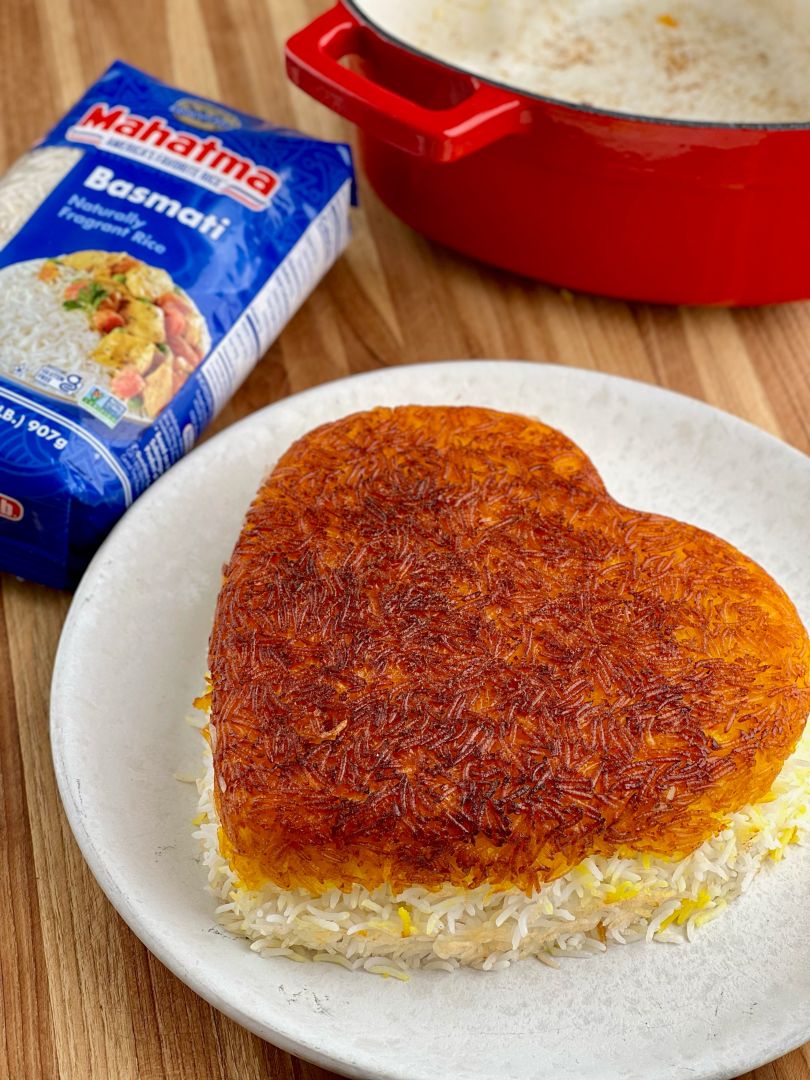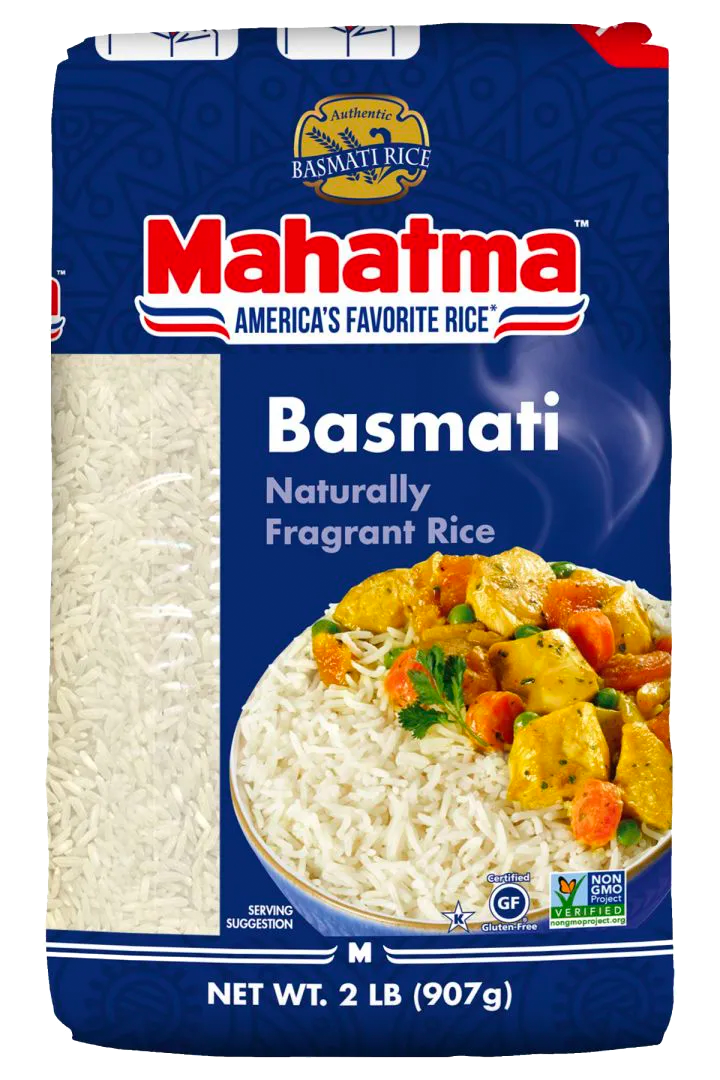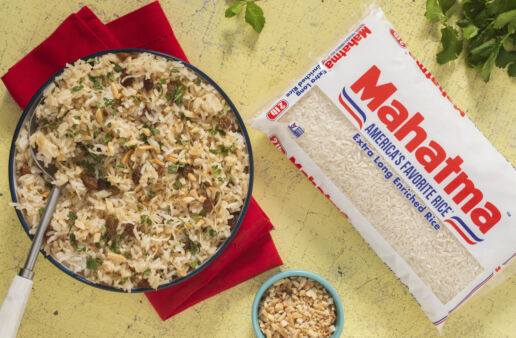
Stella n’ Spice Saffron and Yogurt Tahdig
Instructions
This traditional Iranian recipe was created by Stella Navarro-Kim at @stellanspice using aromatic and fluffy Mahatma® Basmati Rice.
Step 1
Measure 2 cups of rice. Rinse with cold water until the water runs clear.
Step 2
Soak the rice in water and a hefty pinch of salt for 1 hour.
Step 3
After 1 hour bring a large pot of water to a boil then add 1/4 cup of salt.
Step 4
Drain the soaked rice then add it to the boiling salt water and parboil for 5 minutes.
Step 5
After 5 minutes, the rice should puff up slightly and be soft on the outside but still a little hard on the inside.
Step 6
Strain into a fine mesh colander and rinse under cold water to stop the cooking. Taste the rice- if it is too salty, rinse it some more.
Step 7
Strain the rice well.
Step 8
Grind up the saffron threads with your fingers or a mortar and pestle. Dissolve with 2 tbsp of hot water. Let it infuse for 10-15
minutes.Step 9
Mix 1 1/2 to 2 cups of the rice with yogurt, oil, saffron water, and 1 tbsp melted butter.
Step 10
Melt the remaining 1 tbsp butter in a non stick pan or dutch oven. Use a little more butter if you’re using a pan with a larger diameter, like 10 + inches.
Step 11
Add the saffron & yogurt rice, spreading evenly but do not pack it down too tighlty.
Step 12
Then add the remaining parboiled rice on top. Poke 6 to 8 holes into the rice using the back of a wooden spoon or spatula. This allows steam to escape so the bottom can get crispy.
Step 13
Wrap the lid with a kitchen towel, then cover and turn up the heat to medium for 7 minutes. Then turn the heat down to low for 40 minutes.
Step 14
Turn the pot by 1/4 turn every 10 minutes so the bottom cooks evenly.
Step 15
When finished, you can use a flexible spatula to carve around the edges to help it come out cleaner. Press down and let the spatula bend underneath the tahdig to release it from the pan. Remove the lid and place a plate upside down over the top of the pot. Carefully grasp both sides and flip it over, then lift the pot upwards to release the tahdig onto the plate.
What is Tahdig?
Literally translated to bottom of the pot in Farsi, this traditional Persian rice dish features a crispy outer crust which is created by steaming the rice with oil and butter. With it’s aromatic and fluffy texture, Mahatma® Basmati Rice is perfect for making Tahdig. Grab a bag and get practicing!
Practice Makes Perfect
Getting your Tahdig just right takes some practice so don’t feel too disappointed if you don’t get it right away. Sure, there may be a few lucky ones who manage to nail their Tahdig the first time, however being able to consistently get it right every time requires some technique.
That said, mastering the technique takes some practice so expect to have a few botched attempts before you can truly say you can make a Tahdig perfectly. Each time, make a note of any mistakes you make and how you can improve upon them in future. For example, if the bottom of your Tahdig comes out burnt it means that you are cooking it at too high a temperature so try turning the heat down next time. Alternatively if the bottom seems to be stuck in the pan it means you aren’t using enough butter and oil.
Regardless of whether your Tahdig comes out smoothly in one piece, or having to be scooped out one spoonful at a time, it will still taste delicious anyway.
Once you have mastered making Tahdig, you can check out this list of essential rice cooking techniques to really level up your cooking skills.
Tips for Making Tahdig
The best way to get the crispy rice base clean out of the pot is to use a simple non-stick pan.
Another thing you can do is wrap the pan lid with a towel, this will stop any condensation from dripping back onto the rice ensuring that it stays fluffy at the top. While you’re at it, try creating some holes in the rice using a wooden spoon or a similar implement, this will allow more steam to escape creating a crispier bottom.
Finally, rotating the pot 90 degrees every 10 minutes or so will allow the crispy bottom to cook nice and evenly.




